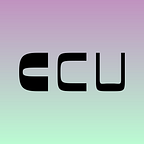Behind The Screens: Heavy Lifting
An interview with musician and live coder Heavy Lifting.
Heavy Lifting is a musician and live coder who makes sound art and electronic music across a range of genres, from black metal to techno. In this interview, we’d like to talk about her practices and tools, as well as work in the community and the way she copes with the radical and drastic changes in their practice resulting from the corona crisis.
1. What was your first encounter with live coding and what are your sources of inspiration?
My first encounter with live coding was via a women-only SuperCollider workshop led by Joanne Armitage and Shelly Knotts in Huddersfield. Before this, I played as a drummer but I hadn’t made any music for a long time. I was getting interested in electronic music but felt frustrated with traditional DAWs, so I went along to the workshop to try something different. Meeting Alex McLean a few months later got me really excited about the possibilities of exploring patterns with TidalCycles. Apart from those three, I’m super inspired by my collaborators in SONA (Deborah Egan and Amy Beeston) as well as my bandmates in TYPE (Ryan Kirkbride, Innocent Granger, and Laurie Johnson), and my cats (Cloud and Nature Boy).
A lot of my music is influenced by my background in archaeology. I’m really interested in the ritual and rhythmic aspects of ancient craft practices, and I’m also fascinated by myth and applying and understanding those stories in the context of our modern life. I think there is something about the universality of human experience that is really humbling. There is probably a parallel there with my interest in re-contextualizing sounds and samples, but I try not to overthink things too much :P
2. What are your preferred platform(s) to use and why?
I mainly use TidalCycles for my solo stuff and FoxDot in collaboration. I love Tidal for the freedom it gives me to manipulate samples, but also because it feels like a collaborator in a certain sense. When I’m writing code to generate patterns, Tidal becomes a fellow musician to respond to.
FoxDot to me feels really playful, probably because my experiences with it are rooted in practicing and performing with my bands TYPE and Trve Yorkshire Kvlt Ensemble. Both these groups are absolute sources of joy in my life ❤
3. Are there any platforms, tools, or extensions that you develop yourself, and if so can you elaborate why and for what purpose?
I’m not really a computer scientist, so I don’t develop my own platforms. Maybe one day.
4. How has live coding influenced your practice of making and thinking about art?
Live coding has been crucial for me, not in terms of changing how I think about art, but in terms of giving me a means of expressing the ideas and thoughts I already had. For example, I always felt frustrated with my physical ability as a drummer, and couldn’t get close to the freedom I feel when live coding. I surprised myself that this expression could come from my relationship with a computer… I think a lot of people also fall into the mistake of thinking that art made with a computer is boring or robotic, but I’ve learned that computers can be friends and collaborators.
5. In what form are randomness or other algorithms applied in your practice or performance? Do you try to pursue serendipity and how or why not?
I use algorithmic randomness a bit, but I would say the unpredictability in the music I make stems just as much (or if not more) from my not being able to understand the complexity of what I’m doing. I have a sense of how certain functions will sound, but I can never calculate the specifics at speed. So I use my ear to respond and adjust to what the computer is doing. Serendipity is key! The computer is my collaborator, and just like improvising with a real-life musician, those moments of flow are precious!
6. Could you share a sneak-peek into any upcoming projects or things you are currently working on?
I’m currently mixing an ambient album I made with my band P Foundation. You can listen to our previous release on Bandcamp. I didn’t use a computer for that one though.
I’m also teaching a module on live coding at Humboldt University in Berlin. This is really the focus of my practice at the moment, re-thinking from scratch what Tidal means to me alongside my students, and especially revisiting a lot of the thoughts and feelings I had when I first started live coding. So I’m not sure where that will take me next. I think the pandemic has wiped away a lot of what used to be important to me in terms of art and music, so maybe it’s an opportunity for me to re-draw the map a little bit.
7. Do you have any other thoughts you would like to share with the readers?
Don’t forget to go outside in the sunshine sometimes, you can even take your computer with you :)
—
This article is part of the Behind The Screens series of Creative Coding Utrecht — a series of events where digital artists and live coders create a piece in ten minutes.
Watch Season 1 // Watch season 2 // More interviews
The Behind The Screens series is sponsored by Stimuleringsfonds Creatieve Industrie.
